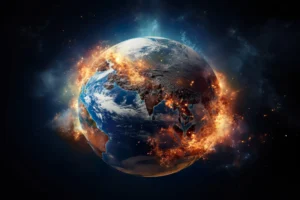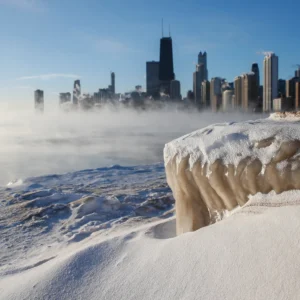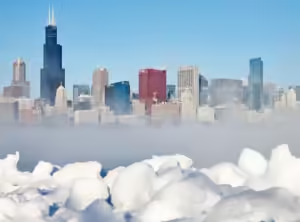Could our winter weather get worse due to global warming? A recent study provides insights.




Nor’easters. Blizzards. outbreaks in the Arctic. The , which is feared. Whether prepared or not, winter’s arsenal of misery is approaching.
And in light of the approaching winter, a recent study claims that the extreme heat in the Arctic, which is a result of global warming, is bringing more of the harsh winter weather that we detest in the United States.
The world’s fastest pace of warming in the Arctic
The Arctic is warming twice, more than twice, or perhaps three or four times faster, according to several other research. According to the World Wildlife Fund, the melting of sea ice is frequently blamed for this quicker rate of warming.
How is our weather impacted by Arctic warming?
Recent studies have hypothesized that because of a smaller north-south temperature differential, the Arctic’s rapid warming—which is three to four times faster than the global average—may make extreme weather events more likely. “We know hazardous winter weather is more likely during these disruptions,” Cohen said, adding that a warmer climate may also lead to more frequent interruptions in the normally stable stratospheric polar vortex.
Describe the polar vortex.
In the Arctic, a massive circular upper-air weather phenomenon known as the polar vortex surrounds the North Pole. It is a typical, natural trend that tends to trap the coldest air close to the North Pole and is more pronounced in the winter.
The Arctic impacts billions of people.
Francis continued, “Our findings show that the profound changes in the Arctic are affecting billions of people throughout the Northern Hemisphere, even though it may seem irrelevant and far away to most people.” “If we can muster the will, we have the instruments to reverse these trends, but it will need strong and swift action to cut our burning of fossil fuels and the buildup of heat-trapping gases in the atmosphere.
Residents get together to meet a basic need after the hurricane when there is no running water.
Since Hurricane Helene devastated North Carolina three weeks ago, tens of thousands of residents have been without water, which is necessary to flush a toilet. Several of her neighbors in Asheville started crying when Lark Frazier asked them how they were doing about flushing water because they were worried about where to use the restroom and how to deal with the trash.
Some told her that to avoid going, they were eating less. Others accused them of covering the yard with leaves and dropping feces there. One old woman said she was going to use her hands to scoop it out of the toilet.
The EPA estimates that 136,000 residents in the Southeast had nonoperational water suppliers a week after Helene when the city established the first water refill locations. There were about 100,000 people in the Asheville area, but the city claims that number has dropped dramatically during the last week.
Thousands of people are still without water, and it’s not clear when it will be restored. One container is almost enough to fill a six-foot pickup bed. Using pumps, Black and DeBruhl have arranged for workers to transport the totes to ponds and then deliver them to locations such as housing complexes.
Because they have a well, those who still have water are providing yet another water solution.
How out of the ordinary has this hurricane season been?

During a particularly active time of tropical storms, sections of the southeast United States have been damaged by Hurricanes Helene and Milton. Five hurricanes formed in less than two weeks—slightly more than the Atlantic would normally receive in a year.
The storms were fierce, becoming worse by the moment.
Why is it Happening?
The start of the season was foreboding. Hurricane Beryl formed in the Atlantic on July 2, making it the first category-five hurricane to do so since 1920.
The 2024 season, which runs from June to November, maybe “extraordinary,” according to warnings from US scientists just a few weeks earlier in May.
But overall, the number of tropical storms—which include hurricanes as well as smaller storms—has been below average and lower than anticipated at the beginning of the year.
Sea surface temperatures have been about 1C higher than the 1991–2020 average in the hurricane-prone Main Development Region, which stretches from the Caribbean to the west coast of Africa, the European Climate Service.
The Remainder of the Season?
The natural La Niña weather phenomena, which influences wind patterns and frequently favors the generation of Atlantic hurricanes, is also likely to emerge in the Pacific. Further activity, however, will depend on other atmospheric conditions—which are difficult to forecast—remaining favorable.
